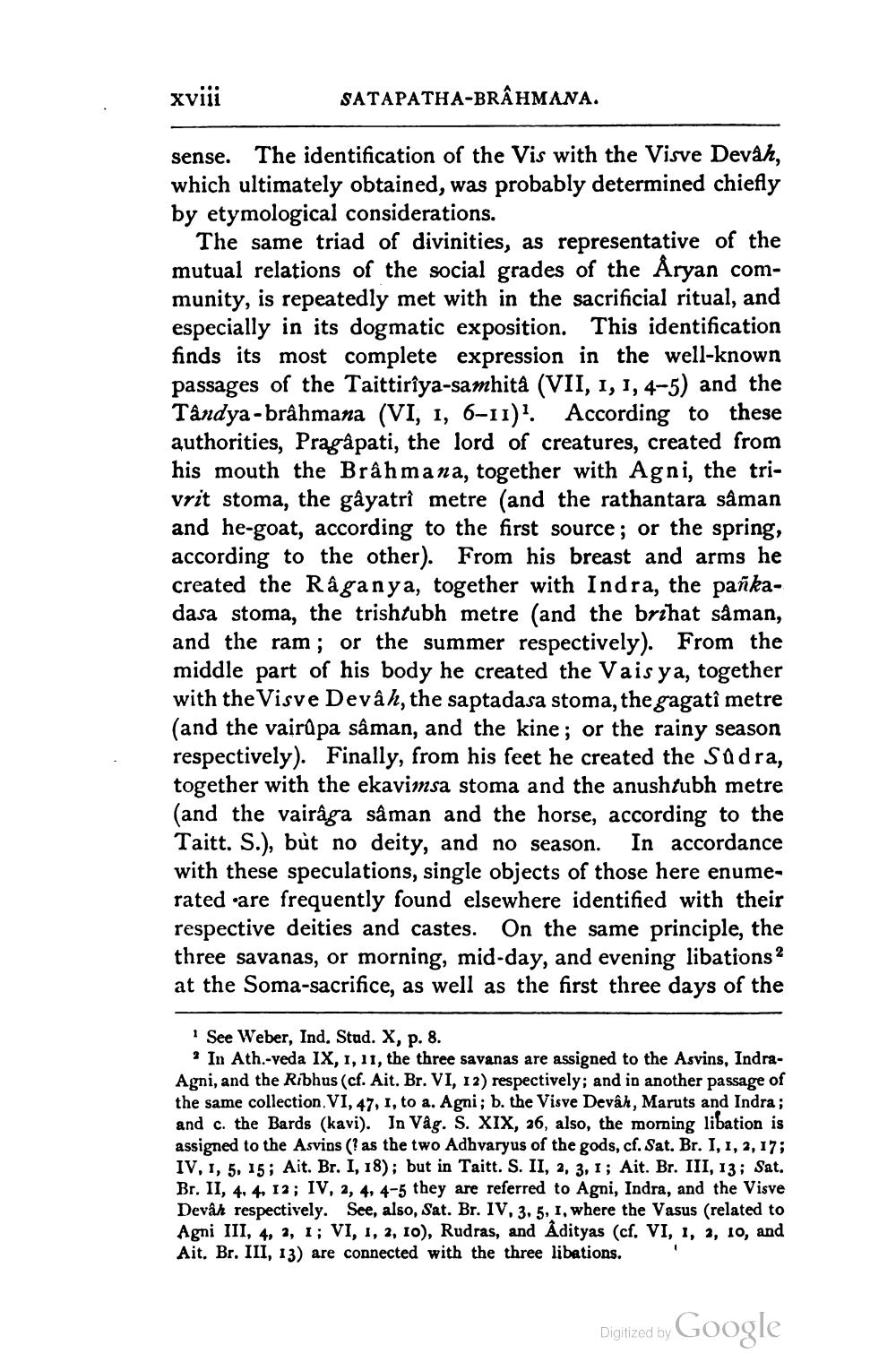________________
xviii
SATAPATHA-BRAHMANA.
sense. The identification of the Vis with the Visve Devah, which ultimately obtained, was probably determined chiefly by etymological considerations.
The same triad of divinities, as representative of the mutual relations of the social grades of the Åryan community, is repeatedly met with in the sacrificial ritual, and especially in its dogmatic exposition. This identification finds its most complete expression in the well-known passages of the Taittirîya-samhita (VII, 1, 1, 4-5) and the Tândya-brâhmana (VI, 1, 6-11)? According to these authorities, Prągâpati, the lord of creatures, created from his mouth the Brâhmana, together with Agni, the trivrit stoma, the gâyatri metre (and the rathantara saman and he-goat, according to the first source; or the spring, according to the other). From his breast and arms he created the Râganya, together with Indra, the pañkadasa stoma, the trishtubh metre (and the brihat saman, and the ram; or the summer respectively). From the middle part of his body he created the Vais ya, together with the Visve Devâh, the saptadasa stoma, the gagatî metre (and the vairūpa sâman, and the kine; or the rainy season respectively). Finally, from his feet he created the Sadra, together with the ekavimsa stoma and the anushtubh metre (and the vairâga sâman and the horse, according to the Taitt. S.), but no deity, and no season. In accordance with these speculations, single objects of those here enumerated are frequently found elsewhere identified with their respective deities and castes. On the same principle, the three savanas, or morning, mid-day, and evening libations 2 at the Soma-sacrifice, as well as the first three days of the
See Weber, Ind. Stud. X, p. 8. ? In Ath.-veda IX, 1, 11, the three savanas are assigned to the Asvins, IndraAgni, and the Ribhus (cf. Ait. Br. VI, 12) respectively; and in another passage of the same collection VI, 47, 1, to a. Agni; b. the Visve Devâh, Maruts and Indra; and c. the Bards (kavi). In Våg. S. XIX, 36, also, the morning libation is assigned to the Asvins (? as the two Adhvaryus of the gods, cf. Sat. Br. I, 1, 2, 17; IV, 1, 5, 15; Ait. Br. I, 18); but in Taitt. S. II, 2, 3, 1; Ait. Br. III, 13; Sat. Br. II, 4, 4, 12; IV, 2, 4, 4-5 they are referred to Agni, Indra, and the Visve Devâh respectively. See, also, Sat. Br. IV, 3, 5, 1, where the Vasus (related to Agni III, 4, 2, 1; VI, 1, 2, 10), Rudras, and Adityas (cf. VI, 1, 2, 10, and Ait. Br. III, 13) are connected with the three libations.
Digitized by Google




